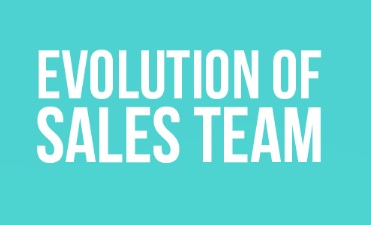It’s a conference….it’s a summit….it’s a camp! Being a startup ourselves, we constantly listen to our customers (who are startups as well!) and try and come up with initiatives that solve their problems and address their pain points.
In that regard, the genesis and the program design of the ProductNation Camp has come from what we’ve been hearing from you – the Indian product startup community. Sandeep has very nicely elucidated the need for a Product Bootcamp for Product entrepreneurs and laid out the broad agenda of the #PNCamp.
#PNCamp is expected to be a very intense, highly curated and focused two-day event with two tracks – Discovery Hacking (on Dec 4) and Scale Hacking (on Dec 5). For a product entrepreneur, getting the first set of customers is mighty important from multiple perspectives – validating the need for the product in the market, generating the first rupees (or dollars!) in revenue and grow the startup from a buzz in the head to a live organism. While 2013 is expected to end with a Dhoom for Bollywood fans, it’s the same for product entrepreneurs attending #PNCamp. Rather than an ending, we hope it’ll be a new beginning for them to grow their startups to greater heights in the coming year. One of the producers of the product startup community’s Dhoom, Sai unveiled the first look of #PNCamp and gave us a glimpse of what’s in store for attendees of the Discovery Hacking track on Day 1.
It is said that well begun is half done. Let’s stay the tough part, that of beginning well has been taken care of and you are now staring at the tougher part – of growing your startup across multiple dimensions. That is when the startup is in the happy-confused state and there are a lot of questions on your mind. Sales cures most ills, but how do you sell? This will be the primary thrust of the morning sessions which is mandatory. Here, we will have separate tracks for those who are selling to a global audience and those who are selling domestically. The challenges, hiring, operations, etc are completely different. In the afternoon, we have various exciting sessions on how to understand and communicate with customers and how to pick the right product direction when you have scarce resources to spread amongst several promising ones. Choice in an uncertain world is not easy and while we promise no silver bullets for your problems, we do promise to ignite enough fire in the belly (and in the heads!) for you to go back and navigate your way into scaling your startup. We also have specific “Oh, Oh, How do I do that?” sessions on specific topisc you’ve always wanted to know..
So specifically, what do we have to offer to you on the Scale Hacking Day:
We will have around 75 chosen participants for the Scale Hacking Day divided into cohorts of 15-20 people each. There are mandatory sessions which all participants will attend and then the cohorts will attend the optional sessions depending on the stage of the company and their interest.
The Mandatory Sessions
“Great Indian Street Fight or Selling In India”
No wonder most of the selling in India happens through ‘feet on street’. And when you’re out there on the streets, it’s always a fight. Fight against time to sign-up customers, fight against a thousand other things to get the customers’ attention, fight for receiving payments on time and just fight for survival!
You have probably got your first set of customers, but you want to scale now. What are the different ways to do that? Does the Channel Partner route work and what are the pros and cons of taking that approach? How do you reach out to your next set of potential customers in an effective manner? Should you now start considering mainstream media for advertising or scale up your digital marketing efforts? More importantly, how do you plan for scale and put together the right team to execute your plans? How to hire the right people and fire the ones that don’t work out well?
Dhiraj Kacker, who has built Cavera into the leading destination for customized printed merchandize and an e-commerce solutions provider for photographers, will facilitate this session. Dhiraj along with Canvera’s Co-Founder Peeyush was recognized as amongst the top-10 Most Influential People in Photography in India by Asian Photography magazine. So he surely knows what clicks with his customers!
“Dancing with Elephant/Winging in the new flat world or Selling to Global Customers”
If IT services companies made the world flat, Saas product companies have made it even flatter!
While Zoho remains the pioneer, we have seen many SaaS companies FreshDesk, WebEngage, Wingify, Capillary Technologies, ChargeBee among others whose products are proudly Indian and that are selling to customers from across the globe. What does it take to build a global SaaS company out of India? More importantly, what does it take to sell to customers you haven’t met or even spoken to? How do you price your product so that customers from across geographies can buy it? How do you take care of the differences in the customers expectations, time zones, languages, even customs and culture across different regions? After all, every product has a personality. What about providing support to global customers?
Samir Palnitkar (ShopSocially, AirTight Networks) & Girish Mathrubootham (FreshDesk, Zoho) will facilitate this session. You wouldn’t want to miss this session unless you want to see your dollar dreams go sour!
The Optional Sessions
“Customers Buy Features, Not Benefits or How To Think Customer First?”
Here’s a quick question – which is the Indian brand that has grown the fastest in recent times and its identity (hint, hint!) transcends all barriers of language, region and religion? What’s more, it is very much an Indian tech startup! Yes, you guessed it right. It is Aadhar. Meet Shankar Maruwada, who gave the Aadhar its brand name and developed its identity and made it into the household brand it is today. Get to know how to place yourself inside the customers’ heads, try and understand what factors play in their decision-making and how you can approach your customers better by anticipating what’s possibly on their minds.
If you want to get a sense of what’s in store for you, watch this video
http://www.youtube.com/watch?v=cTNVTaPXfqI#t=58
Well, you wouldn’t want to be that fish which can’t understand how people live without water!
“How to get featured in TechCrunch, spending $0”
It’s true that media coverage alone isn’t the true barometer of success of a startup. But hey, when has positive media attention, especially from a top global publication like TechCrunch hurt any startup? That is of course, assuming that the product is a good one!
For a lot of product entrepreneurs, getting featured on TechCrunch is a dream and considered as a good means to be visible in front of a lot of people – customers, investors, partners among others. So what does it take to get featured in TechCrunch? Considering they’d be getting hundreds of requests each day, do the writers and editors there even read such emails? Do you need to hire a high-profile PR agency and spend a lot of money? Or should you just build something meaningful and the coverage will happen by itself?
Valorie Wagoner, Founder of ZipDial, has done that and been there (on TechCrunch). ZipDial is one of the fastest growing global startups emerging from India and Valerie will share her experiences of getting covered in global tech blogs and tell you how your startup can also get featured with no money spent!
“Positioning for Getting Acquired”
So you think acquisition only when you have reached a certain level and scale of business? Well, that’s what a lot of entrepreneurs in Bangalore thought before they attended this round table. How do you know if the time is ripe for your company getting acquired? How do you choose between multiple suitors you may have? What are some of the key things one should keep in mind so that all the stakeholders have a favourable outcome? While an acquisition is a regular business transaction in the US, do we Indians get (needlessly?) emotional about it?
Jay Pullur, Founder and CEO of Pramati Technologies and Sanat Rao, Director, Corporate Business Development (Emerging Markets) at Intel will facilitate this session. iSPIRT has a very active M&A initiative with Jay and Sanat actively leading the M&A Connect. You’d surely not want to miss this opportunity to understand how you can set yourself up for a nice acquisition.
“The Forum or Where You Can Bring Out Your Worst Fears!”
Every CEO needs somewhere to turn for the insight and perspective only trusted peers can provide. When such peers meet together in a setting where there is an atmosphere of confidentiality, respect and trust, it can become a supreme sounding board. We will call such a setting a “Forum”. Such a forum can become most valued asset for the members, because the maxim holds true: it can be lonely at the top, but it doesn’t have to be.
At #PNCamp, we want to experiment, for the first time, with building such a Forum by forming a small group of peers who meet regularly to exchange ideas, thoughts and experiences on the issues that matter most to them. During the first meeting at the PNCamp, this group will be taught effective forum techniques, a set of protocols and a shared language that creates immediate and meaningful connections among members.
We expect that once created, the Forum group will periodically meet either in person or online with the following agenda:
1- Update each other by looking back since the last meeting and looking forward
2- Identify, discuss and park business issues that are typically Important but not Urgent
3- Make presentations around these issues and get non-judgmental feedback from the fellow members
I’ll end this post with a quote from the very inspirational movie, The Shawshank Redemption.
Dear Red, If you’re reading this, you’ve gotten out. And if you’ve come this far, maybe you’re willing to come a little further. You remember the name of the town, don’t you?
Of course, you remember the name of the town. It’s Pune and we look forward to see you in Pune on Dec 4 and Dec 5 for #PNCamp.
PS. After all this if you haven’t still applied for #PNCamp yet, we’re afraid you may be a little late. Apply Now here!



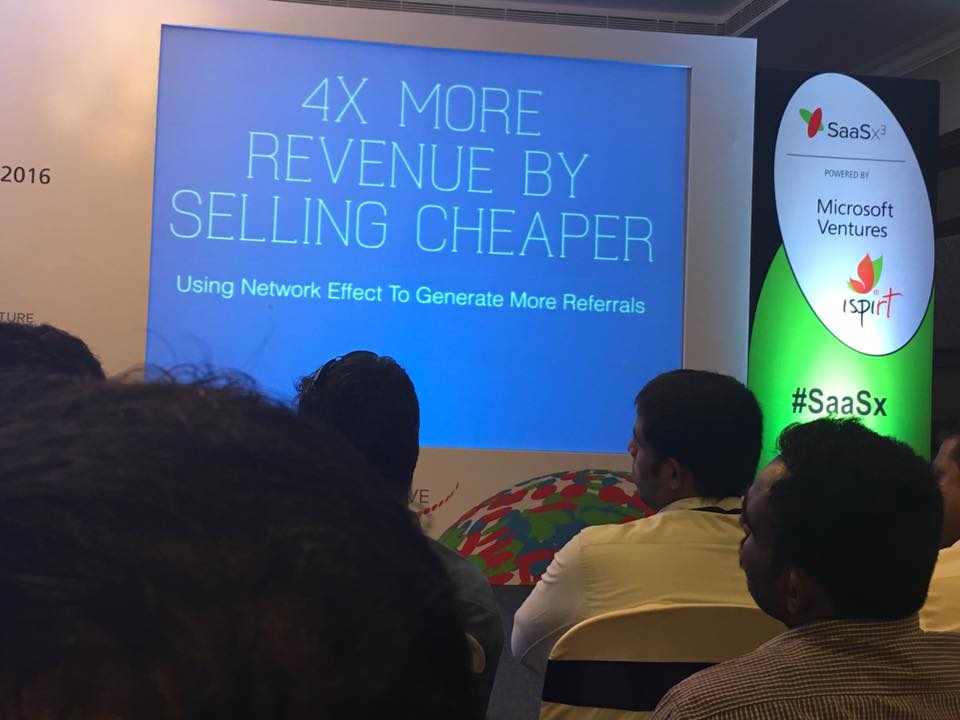 One strategy is using the “powered by *product logo*” inside the product to attract more prospects. This was especially used in a novel way. WebEngage chose a customer (of course, after a due diligence) to sell its low-priced product in an unpresent geography. Then the logo was added in the product to attract more customers in the region. The customer acquisition cost is reduced as a result. Nemesh of Appointy (which helps businesses to schedule appointments) has 118,000 customers, all of them acquired at zero cost of marketing. This was done through backlinks (two lines of codes in the product), which would indirectly show up in the Google search when someone searched for a tool for appointments. Ankit spoke of four strategies to customer acquisition without much marketing spend.
One strategy is using the “powered by *product logo*” inside the product to attract more prospects. This was especially used in a novel way. WebEngage chose a customer (of course, after a due diligence) to sell its low-priced product in an unpresent geography. Then the logo was added in the product to attract more customers in the region. The customer acquisition cost is reduced as a result. Nemesh of Appointy (which helps businesses to schedule appointments) has 118,000 customers, all of them acquired at zero cost of marketing. This was done through backlinks (two lines of codes in the product), which would indirectly show up in the Google search when someone searched for a tool for appointments. Ankit spoke of four strategies to customer acquisition without much marketing spend.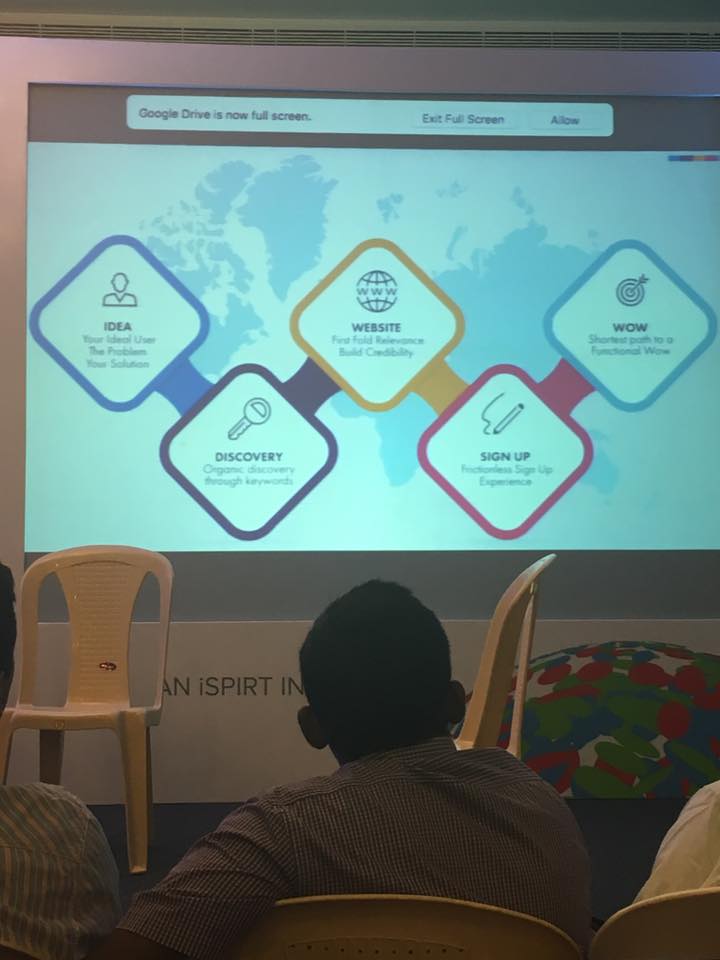
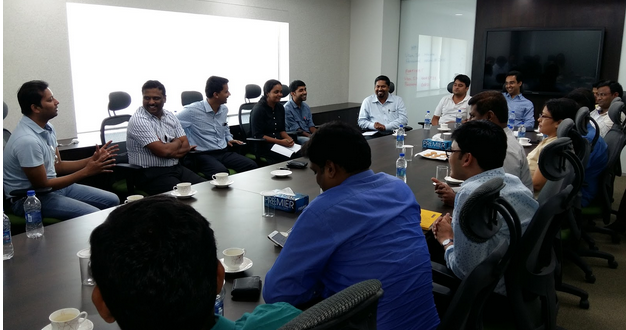
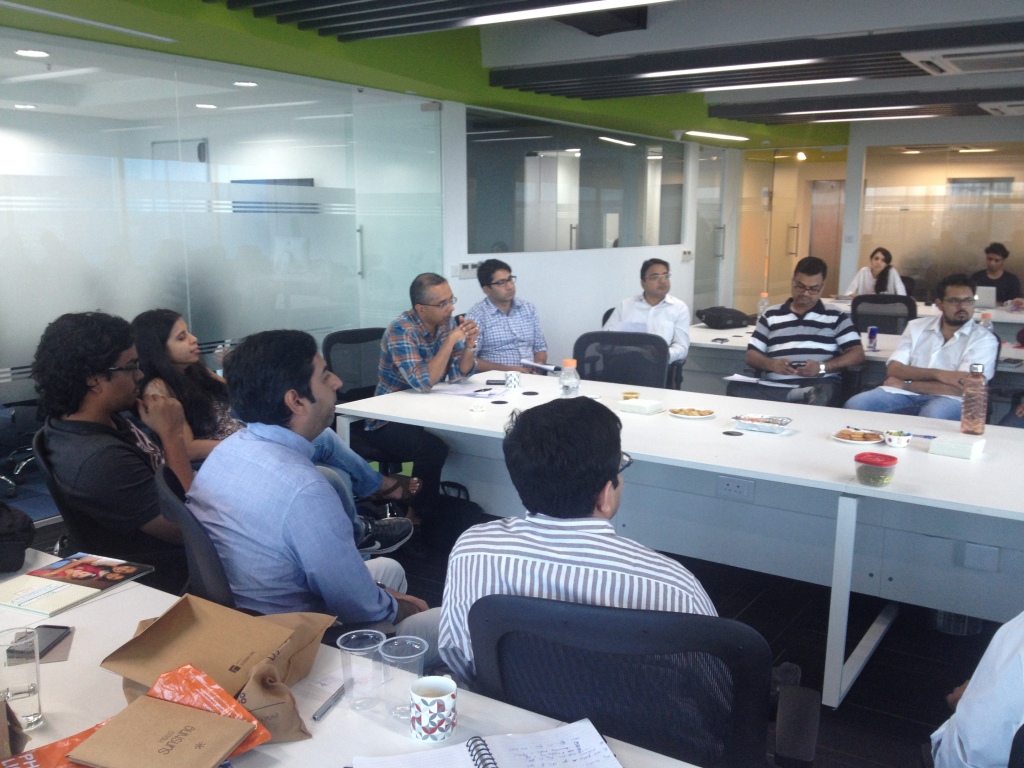 Over six intellectually stimulating hours, all of us had our product pitches brutally critiqued by everybody else under the guiding presence of
Over six intellectually stimulating hours, all of us had our product pitches brutally critiqued by everybody else under the guiding presence of 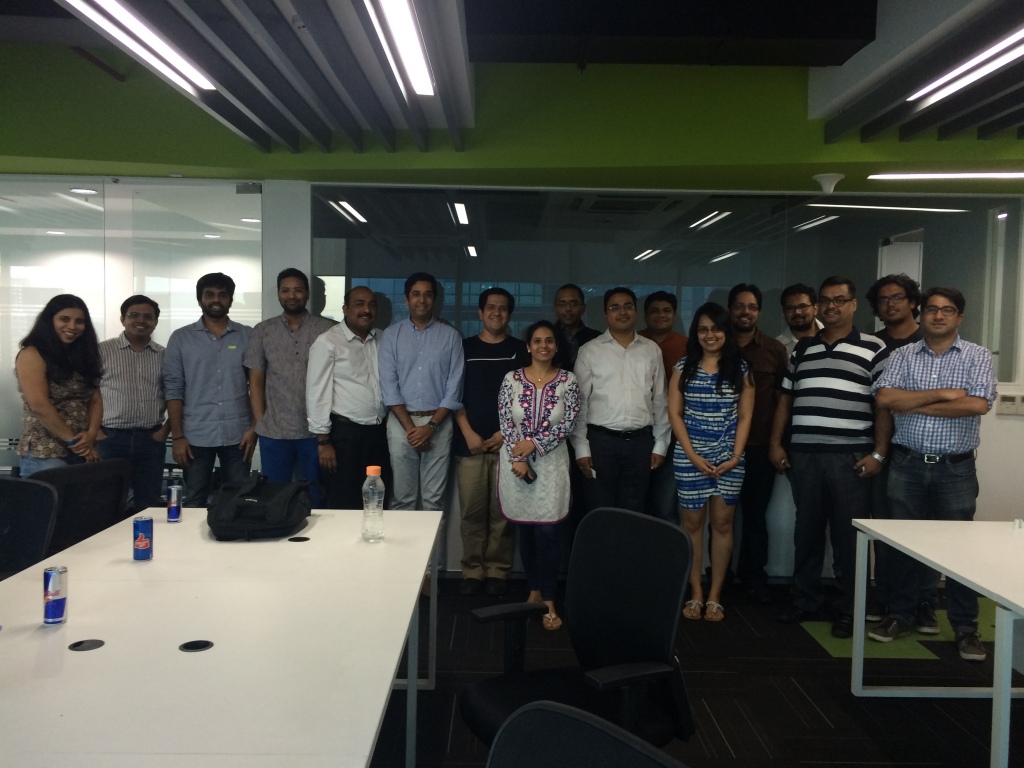

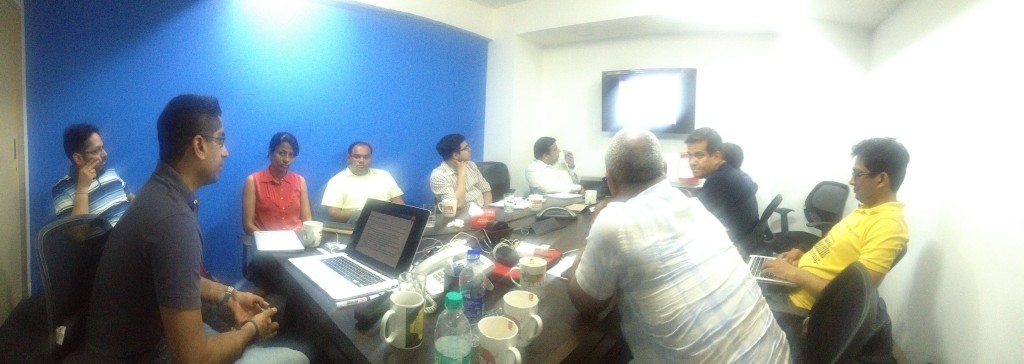 Content Marketing
Content Marketing Conclusion
Conclusion The event went on for around 6 hours but given the variety of issues discussed each issue could be touched upon briefly. Since this was the initial event of this kind in Mumbai, a lot of participants were meeting each other for the first time. Some time therefore had to be spent in understanding each other’s businesses, back-stories and some of the special challenges they faced.
The event went on for around 6 hours but given the variety of issues discussed each issue could be touched upon briefly. Since this was the initial event of this kind in Mumbai, a lot of participants were meeting each other for the first time. Some time therefore had to be spent in understanding each other’s businesses, back-stories and some of the special challenges they faced.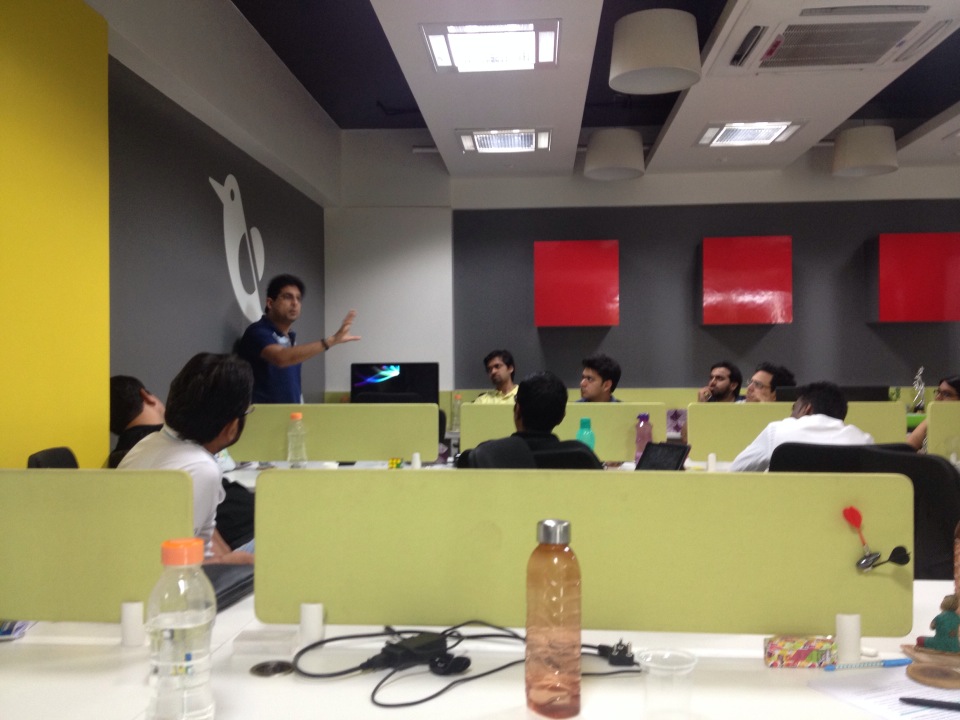 Sales Bible
Sales Bible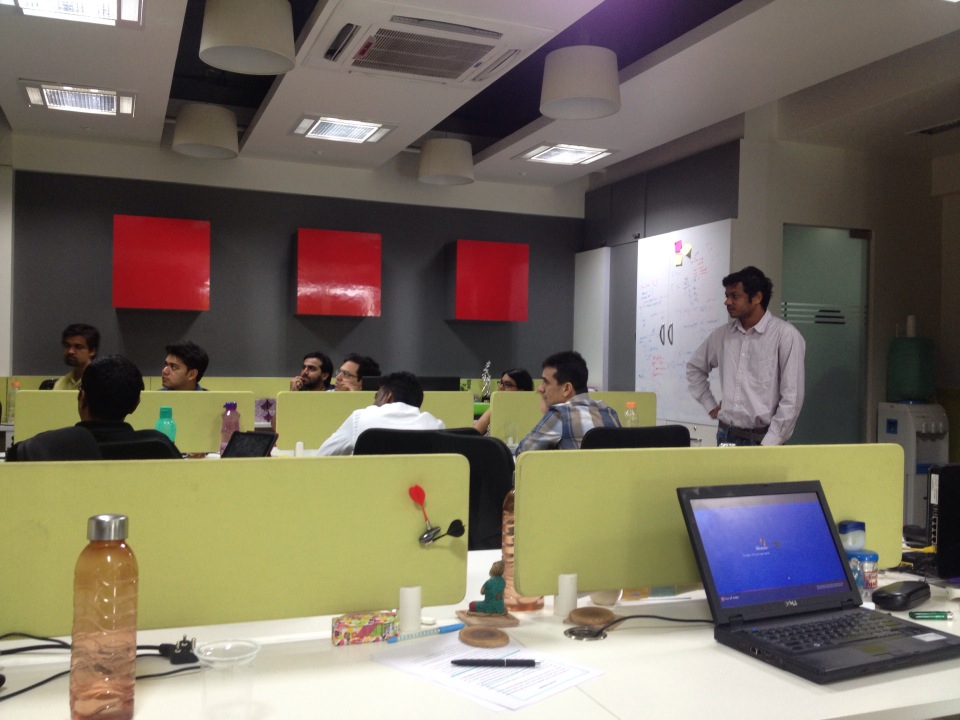 Free vs Paid
Free vs Paid